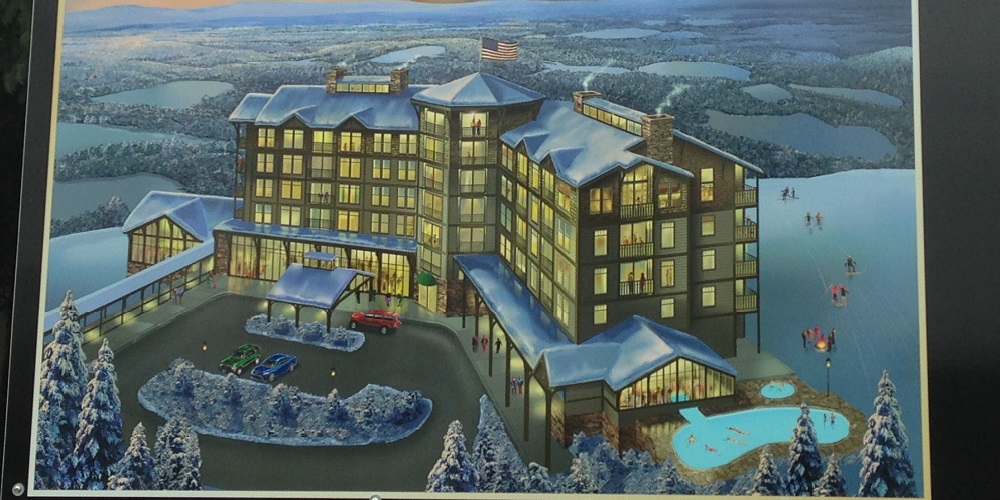
BOILING SPRINGS, Pa. (June 1, 2017) – On Tuesday, the Lower Towamensing Township Zoning Hearing Board in Carbon County, Pennsylvania, granted seven of eight variances requested for Blue Mountain Ski Resort, allowing the construction of an 85-foot-high condominium and hotel only 12 feet from a National Park Service Conservation Easement created to protect the scenic corridor of the Appalachian Trail (A.T.). As planned, the construction will impact the views and seclusion sought by millions of hikers each year, as well as contribute to light and noise pollution in the area.
“The action the Board has taken disrespects hikers and the supporters of Pennsylvania’s Act 24, which was designed to protect the Appalachian Trail,” said Ron Tipton, president and CEO of the Appalachian Trail Conservancy (ATC). “The Board had a chance to require the applicant to relocate the project or to change the condominium and hotel design to be less visible to Trail hikers. The Board chose neither. Instead, they decided to weaken zoning requirements that were designed to preserve the unique hiking experience provided by the Trail.”
“We will appeal this decision and use the legal means necessary to achieve the appropriate outcome with the support of other Trail clubs,” Tipton added.
Will Callaway, Mid-Atlantic policy manager for the Appalachian Mountain Club (AMC), whose members have served as volunteer stewards of the A.T. section near Blue Mountain Ski Resort for more than 40 years, also noted the club’s concerns regarding the Board’s decision.
“We are concerned that the variances that Lower Towamensing Township granted did not consider alternatives and will allow the resort to build even higher and closer to the Trail,” he said. “These variances will cause even more damage to the Trail experience than otherwise would have been allowed while undermining the conservation purpose of Pennsylvania’s Act 24.”
At a prior hearing on April 18, the Board denied Conservancy representatives the right to be a legal party to the evening’s proceedings despite the existence of a 2014 National Park Service agreement, which permits the ATC to advocate for the A.T. when it is threatened by development. This action by the Board effectively prevented the ATC from being able to provide testimony regarding the extensive impact this project would have on the Trail.
While there were seven other variances under review for this project, the variance that changes zoning for maximum building height from 50 feet to 85 feet is of most concern to the ATC due to its impact on the surrounding viewshed. Other variances addressed lot width, building setback requirements, maximum lot coverage, percentage of open space, required parking spaces, parking lot surface cover, and subdivision and land development ordinance (SALDO) design requirements.
“While the Appalachian Trail Conservancy genuinely wants to see neighboring outdoor recreation businesses succeed, we want to work with them to ensure that their efforts don’t degrade the Trail,” said Karen Lutz, regional director for the ATC. “There are alternatives to this plan and we are ready to work with Blue Mountain Ski Resort to find creative ways to protect the Trail user’s experience while still allowing the resort to thrive. However, we are ready to defend the Appalachian Trail for millions of visitors who expect to have a unique and memorable outdoor recreation experience.”
About the Appalachian Trail Conservancy
The ATC was founded in 1925 by volunteers and federal officials working to build a continuous footpath along the Appalachian Mountains. A unit of the National Park System, the A.T. ranges from Maine to Georgia and is approximately 2,190 miles in length. It is the longest hiking-only footpath in the world. The mission of the ATC is to preserve and manage the Appalachian Trail – ensuring that its vast natural beauty and priceless cultural heritage can be shared and enjoyed today, tomorrow, and for centuries to come. For more information, please visit appalachiantrail.org.